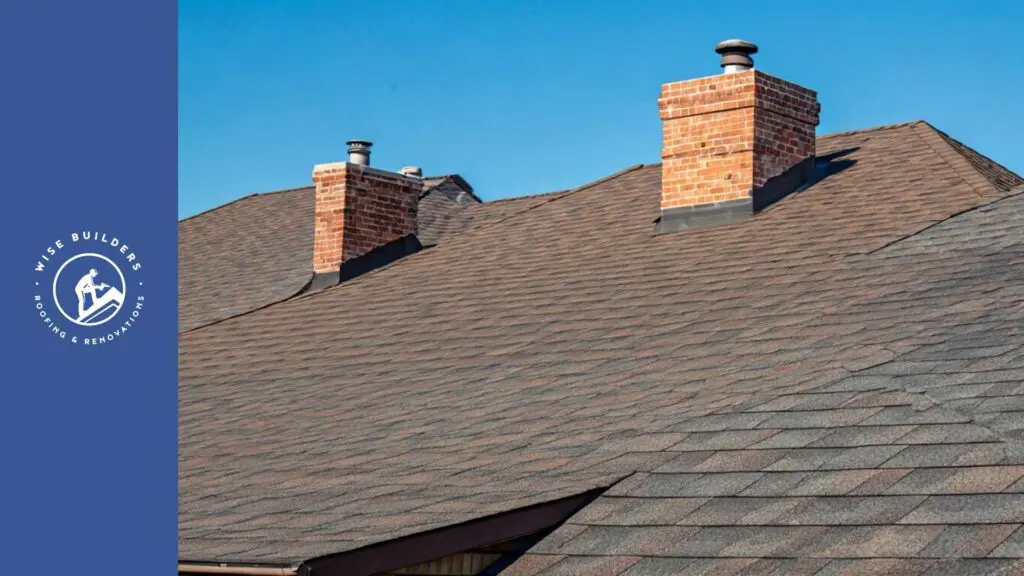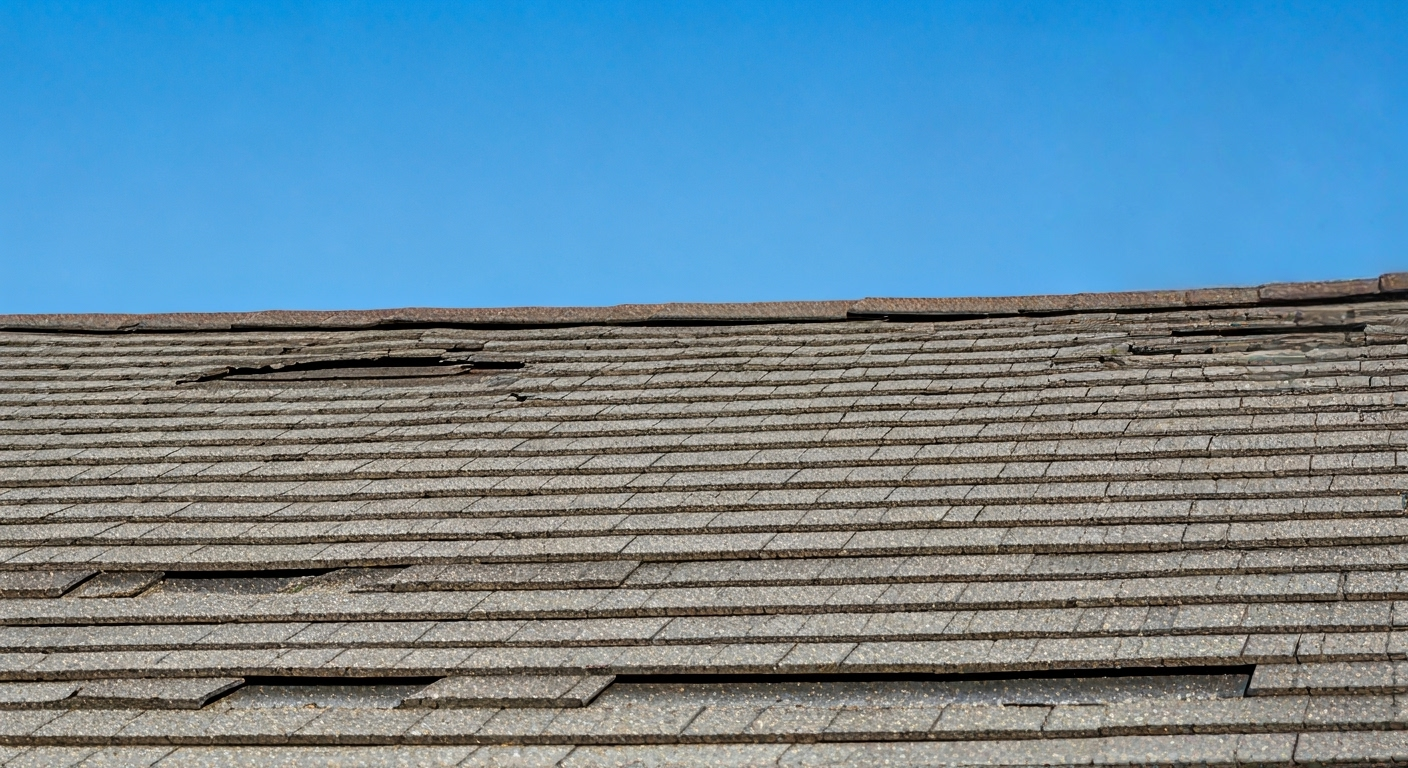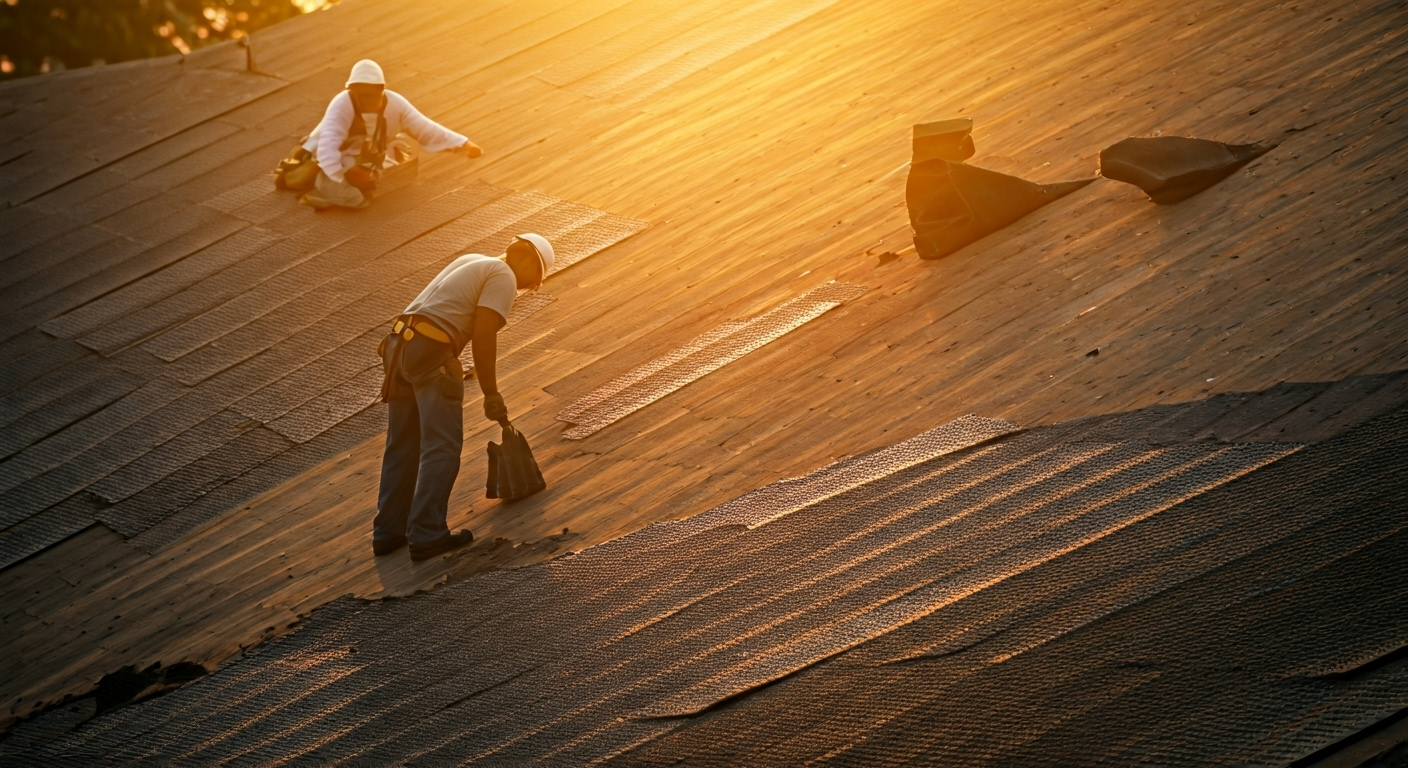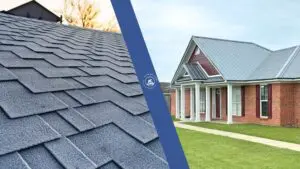
Key Highlights
- Learn the key reasons for roof replacement, from an old roof nearing its lifespan to severe damage requiring immediate attention.
- Explore popular roofing materials like asphalt shingles, metal roofing, and clay tiles to find the best fit for your home.
- Find out how to prepare your space to minimize property damage during the new roof installation.
- Follow each step in the complete roof replacement process, from inspection to cleanup.
- Understand the role of a professional roofing contractor in ensuring quality and durability.
- Address common concerns with answers to FAQs about replacing your roof.
Introduction
A roof replacement is a substantial home improvement project that boosts protection, curb appeal, and overall value. Whether you’re installing a new roof due to age or damage, understanding the roofing project gives you an edge in making informed decisions. Choosing reliable materials and an expert roofing contractor ensures a smoother process and lasting results. This guide takes you through every critical step involved in a roof replacement—from assessing your old roof to completing the installation.
Understanding When Your Roof Needs Replacement

Recognising a roof in need of replacement is essential to maintaining your home’s safety and functionality. An aging roof or one with frequent repairs can signal it’s time for an upgrade. Issues like missing shingles and compromised roofing materials can result in leaks, driving up repair costs.
If your old roof has surpassed its recommended lifespan or shows visible damage, taking prompt action is vital. Keep reading to identify the signs of roof damage or deterioration in more detail.
Common Signs of Roof Damage
Your roof often ages with subtle issues before showing visible faults. Keeping an eye on warning signs like missing shingles or leaks can prevent minor concerns from escalating.
- Missing shingles: Worn shingles or shingles stripped by storms leave gaps, exposing your roof deck to water damage.
- Granules in gutters: If granules from asphalt tiles accumulate in your gutters, the shingles are likely deteriorating.
- Leaks: Persistent water leaks into your attic or living spaces call for immediate roof repair or replacement.
- Roof deck concerns: Sagging in the roof deck suggests structural damage, which must be addressed during roofing renovations.
A thorough assessment of these symptoms helps you decide whether repair or roof replacement is the best solution. Learn how the age of your materials impacts roof longevity in the next section.
Assessing the Age and Lifespan of Roofing Materials
The longevity of roofing materials depends on their quality, maintenance, and exposure to climate conditions. Ensuring your materials are within their lifespan helps avoid problems down the road.
Below is a text table outlining estimated lifespans for common roofing materials:
| Roofing Material | Expected Lifespan |
|---|---|
| Architectural asphalt shingles | 30 years |
| Three-tab asphalt shingles | 20 years |
| Metal roofing | 40–80 years |
| Clay or concrete tiles | 100+ years |
| Slate | 60–150 years |
Manufacturer warranties, often ranging from 20 to “lifetime coverage,” provide an additional indication of durability and maintenance requirements. Next, we cover how to pick the best material for your roof.
Choosing the Right Roofing Material
Your choice of roofing materials directly affects durability, design, and cost. Factors like the roof pitch and climate play a pivotal role in selecting options.
Architectural shingles, known for their versatility and strength, remain a popular choice for varied needs. Conversely, metal roofing offers longevity and energy efficiency but requires a higher financial commitment. Understanding the pros and cons helps homeowners make informed decisions. Compare specific options in the following breakdown.
Comparing Asphalt Shingles, Metal, and Other Options
Different roofing materials cater to varied budgets and preferences. Asphalt shingles, clay tiles, and slate provide unique features.
| Material | Advantages | Disadvantages |
|---|---|---|
| Asphalt shingles | Affordable, versatile, easy to install | Shorter lifespan compared to others |
| Metal roofing | Long-lasting, energy-efficient | Higher upfront costs |
| Clay tiles | Extremely durable, fire-resistant | Heavy and requires reinforced framing |
| Slate | Premium look, unparalleled durability | Costly and heavier than alternatives |
Dimensional shingles can simulate high-end aesthetics affordably, while energy-efficient options suit hot climates. Let’s explore climate-specific considerations next.
Factors to Consider for Your Home and Climate
When choosing roofing materials, durability and climate compatibility are top priorities. Local weather patterns and other factors will impact your decisions.
- Durability: Opt for materials proven to withstand harsh conditions. Architectural shingles and metal roofing work well for most homes.
- Roof pitch compatibility: Steeper roof pitches are better suited to wood shakes, while flatter roofs may demand lighter materials.
- Climate suitability: Materials like clay tiles excel in warmer climates, while slate performs well in wet regions.
- Warranty coverage: Review warranty details for material-specific obligations and restrictions.
These factors ensure long-term value and safety, keeping your home secure. Next, we’ll guide you on preparing your home for roof replacement.
Preparing for Roof Replacement
Taking the necessary steps before roof replacement minimizes disruptions and ensures a safer process. A roofing contractor will outline preparation needs based on your roof deck and material choice.
From scheduling work to protecting landscaping, thoughtful preparation avoids unnecessary headaches. Genuine contractors understand these priorities, helping you safeguard your home effectively. Permits and scheduling are first up in the preparation checklist.
Scheduling and Permits
Proper scheduling and permits simplify roof replacement. Your contractor will apply for necessary permits compliant with local building codes.
- Building codes: Ensure local regulations don’t obstruct your roofing project. Contractors know the scope of work required to meet these standards.
- Timely scheduling: Align work schedules to avoid conflicts during installation.
- Permit acquisition: Necessary permits indicate that roofing work complies with local rules. After obtaining permits, your contractor will identify the next step to begin work.
Next, learn how you can protect outdoor assets during the process.
Protecting Your Property and Belongings
Safeguarding your property during roof replacement is vital. Taking basic precautions prevents damage and simplifies post-installation cleanup.
- Use tarps: Protect landscaping and outdoor furniture with durable tarping materials.
- Secure gutters: Inspect gutters to avoid blockages or damage from falling debris.
- Protect the attic: Cover interior belongings stored in the attic to shield them from roof repairs.
Contractors help ensure that professional cleanup protects your property from stray nails and misplaced materials. Now it’s time to review the full roof replacement process.
Step-by-Step Roof Replacement Process

Knowing what happens during a roof replacement process helps you manage expectations. Removing the old roofing system, inspecting the roof deck, and installing new materials are crucial steps.
Every phase—starting with stripping the old layers and progressing to a new roof installation—adds durability and value to your property. First, we look at the removal stage.
Removing the Old Roofing System
Removing the old layer of shingles is crucial for a full roof replacement. Contractors start by stripping the roof down to its sheathing and eliminating all debris.
Tearing off damaged shingles prevents surface irregularities in new installations. Roofers often place discarded sheathing in dumpsters for proper disposal, keeping cleanup efficient. Heavy-duty inspections identify faults in existing layers and prepare the structure for the next phase.
Once stripped, the roof deck is inspected to ensure structural integrity.
Inspecting the Roof Deck and Making Repairs
The roof deck serves as the foundation of your roof system. Inspecting decking and rafters helps avoid underlying issues like leaks or rot.
If damage is found, repairs or replacements are completed before progressing. Rotten decking is reinforced with new plywood or OSB panels, restoring strength. Contractors also check for moisture penetration and ensure hidden leaks are fixed.
Attention to detail in this step prolongs the lifespan of your new roof. Next up is installing underlayment.
Installing Underlayment and New Roofing Materials
Underlayment installation is the first protective layer above the roof deck. Synthetic or asphalt materials prevent leaks and enhance durability.
- Starter shingles: These are applied along roof edges for added wind resistance.
- Valley flashing: Metal or rubber flashing covers joints in the roof valleys for leak prevention.
- Drip edge: Installed along eaves, the drip edge protects roof lines from water damage.
The final shingles are laid in staggered rows for maximum protection. Ridge vents complete the process, promoting attic ventilation.
Conclusion
Replacing a roof is a significant investment in your home that requires careful planning and execution. By understanding the signs of damage, choosing the right materials, and following a systematic replacement process, you can ensure that your new roof will protect your home for years to come. At Wise Builders, we’re committed to providing exceptional service and quality craftsmanship that meet your unique needs. If you’re ready to take the next step in safeguarding your property, reach out to us for a free consultation. Let’s work together to make your roofing project a success!
Frequently Asked Questions
How long does a roof replacement take?
A roof replacement typically takes one to three days, depending on the square footage and complexity of the job. An experienced roofing contractor adjusts timelines based on weather and project scope to ensure a full replacement is completed efficiently.
Will my landscaping or home be protected during the process?
Roofers safeguard your landscaping and property using tarps and careful debris management. Gutters are cleared, and the cleanup process ensures plants and driveways remain intact. Your roofing contractor places high importance on protecting your assets throughout the project.
Can I stay in my home while the roof is being replaced?
Yes, you can generally remain in your home during a roof replacement. However, be prepared for temporary noise disruptions from roofers working on the attic or exterior layers. If needed, plan your day accordingly for comfort during the roofing project.
At Wise Builders Roofing and Renovations, we ensure quality craftsmanship for every home we serve. Reach out for expert support in all aspects of roof installation!







